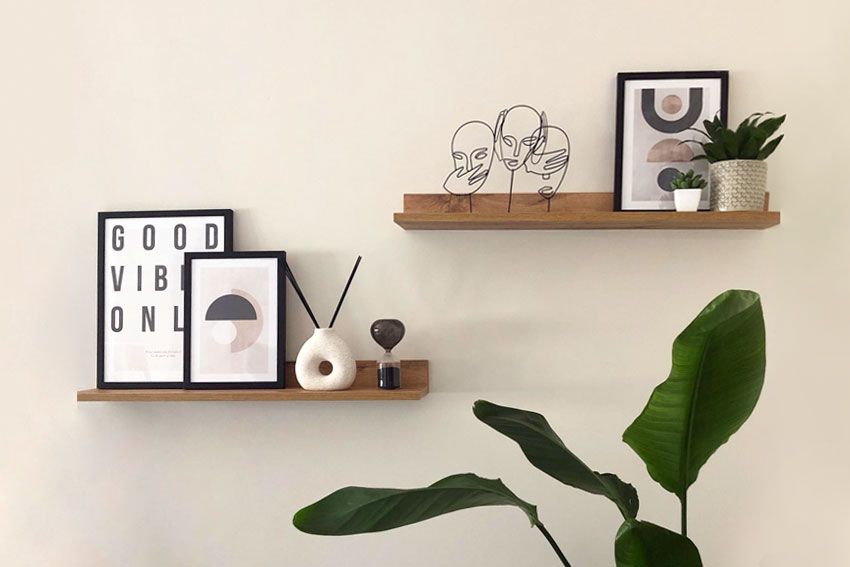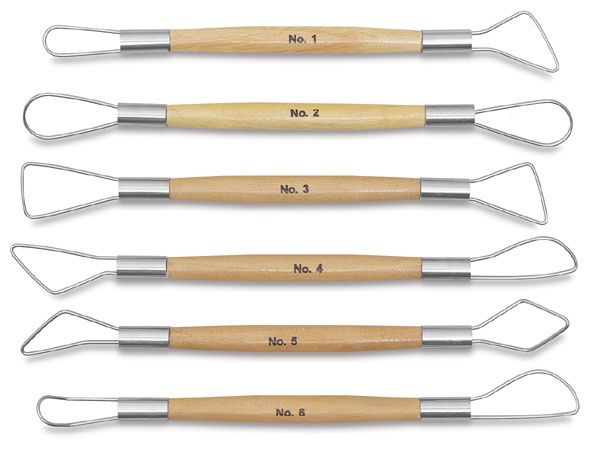How Do You Install Pottery Barn Floating Shelves?
Floating shelves are a popular decor choice for many homes. They provide a clean, minimalist look while adding storage and display space to any room. Pottery Barn is one retailer that offers a variety of stylish floating shelf options.
Floating shelves are installed on the wall without visible brackets or hardware. This gives the illusion that they are “floating” on the wall. They create a streamlined, modern aesthetic that can work in many interior design styles.[1] The open space below floating shelves helps rooms feel more spacious and airy. They allow you to highlight decorative items without cluttering counter or table space.
Key benefits of floating shelves include:[2]
- Maximized space and minimalist look
- Flexibility – install them at any height or location
- Easy to install on your own
- Affordable way to add storage and display
Pottery Barn’s floating shelves come in a variety of lengths, depths, and finish options. They offer floating shelves made of engineered wood, mango wood, acacia wood and more. Their mounting hardware allows the shelves to be securely installed into drywall or studs.
Tools Needed
Installing Pottery Barn floating shelves requires some basic tools that most homeowners likely already have on hand. The main tools needed include:
A stud finder – A stud finder is essential for locating the wall studs behind the drywall so you can ensure at least one bracket is securely attached to a stud. Models that detect metal and wood studs are ideal.
A drill with drill bits – A power drill with a range of drill bits is necessary for drilling pilot holes and driving in screws. Have a selection of drill bits on hand including sizes suited for the screws and drywall anchors.
A level – A basic level helps make sure you install the brackets and shelf in a perfectly straight line.
Screws – Purchase screws intended for mounting floating shelves. Look for corrosion resistant options like galvanized steel or stainless steel.
Drywall anchors – Include drywall anchors to secure any brackets attached just to drywall between the studs. Opt for hollow wall anchors or toggle bolts designed to hold heavy weight.
In addition, have a pencil, tape measure, ladder, and possibly a helper on hand. Safety gear like glasses and gloves is also recommended.
Find the Wall Studs
The key to securely installing floating shelves on drywall is locating and using the wall studs for support. Wall studs are vertical beams typically placed 16 inches apart that make up the frame of the wall. It’s important to find a stud to anchor at least one end of the shelf into.
To find the studs, use an electronic stud finder. Run the stud finder slowly across the wall at the height you want to install the shelf. When it detects a stud, it will light up and/or beep. Mark the location with a pencil. Check both sides of the wall to detect the edges of the stud.
You can also locate studs by tapping along the wall and listening for a solid “thud” sound. Hollow areas indicate no stud. Or use a strong magnet – it will stick to drywall screws or nails in the stud. Mark all stud locations before proceeding.
Mark the Shelf Location
Determining the desired height for your floating shelves is an important step before installation. The standard height for a single floating shelf in a living room is around 4-4.5 feet from the floor, while multiple shelves can start at this height and be spaced 12-24 inches apart going upwards (Vandykes.com).
In a kitchen, floating shelves are often mounted about 18-20 inches above the countertops, while in a bathroom they may be installed around 60 inches high. Consider the room’s purpose and traffic flow when deciding on shelf height (Diyinspired.com).

Once you determine the desired position, use a level to draw a straight horizontal line across the wall marking the shelf location. This allows you to visualize the placement and acts as a guide when installing the mounting brackets (Mobilifiver.com). Adjust the height as needed until you are satisfied with the look.
Install Drywall Anchors
The next step is to install drywall anchors into the pilot holes to support the mounting brackets. Drywall anchors provide secure attachment points for screws since you typically won’t be drilling into studs. There are different types of anchors available, but for floating shelves, plastic expansion anchors or screw-in anchors work well.
Start by drilling pilot holes using a drill bit slightly smaller than the anchor diameter. Drill the holes at the markings you made earlier to locate the shelf. Drill the holes deep enough to accommodate the length of the plastic expansion anchor or at least an inch deep for screw-in anchors. Make sure to hold the drill straight to keep the holes perpendicular to the wall.
Next, insert the drywall anchors into the holes. For expansion anchors, tap the anchor gently with a hammer until the lip is flush with the wall. With screw-in anchors, you can drive them into the hole with a Phillips head screwdriver until the flange is flush.
The drywall anchors will provide secure attachment points on the wall to mount the brackets and support the shelf weight.
Attach Mounting Brackets
Once the anchors are installed, it’s time to attach the mounting brackets that came with your floating shelves. Make sure to follow the manufacturer’s instructions, as bracket designs can vary.
Start by holding a bracket against the wall in the desired location. Use a pencil to mark the locations of the screw holes. It’s important to position the bracket so at least one screw can be driven into a wall stud. If using drywall anchors, make sure the other screw locations line up properly.
Next, screw the brackets into place. Use the appropriate drill bit to create pilot holes. When screwing into a stud, use the provided wood screws. For drywall anchors, use the provided screws or ones recommended by the anchor manufacturer. Make sure the brackets are level and anchored securely – they will be holding the weight of the shelf and items placed on it.
Take your time attaching the brackets and ensure they are properly aligned. Refer to the instructions provided with your shelf brackets for the recommended spacing between them. Proper bracket placement is crucial for keeping shelves level and preventing sagging over time.
Cited from: https://www.ultrashelf.com/pages/bracket-installation
Prepare the Shelf
Before hanging the shelf, you’ll need to attach the provided hanging hardware to the shelf according to the manufacturer’s instructions. This usually involves:
- Locating the hanging hardware, which is often included with the shelf or can be purchased separately. Look for metal braces, hooks, or mounting plates.
- Positioning the hardware on the back of the shelf in the desired location, often 3-4 inches from each end. Ensure the hardware extends a few inches above the shelf.
- Using a drill, attach the hardware securely into the shelf back using the provided screws. Pre-drill pilot holes if needed.
- Double check that the hardware is firmly fixed and able to support the weight of the shelf and items placed on it.
Proper hardware installation prevents the shelf from detaching from the wall. Follow the manufacturer’s instructions closely for the shelf model you purchased. Once ready, the shelf can be hung securely on the hardware.
Hang the Shelf
With a helper, lift and position the shelf on the mounting brackets attached to the wall. Make sure the shelf is resting securely on the brackets before letting go. You may need to wiggle and adjust the shelf slightly to get it to sit flat.
Use a level tool to double check that the shelf itself is perfectly level. If needed, you can adjust the brackets slightly up or down on the wall anchors to achieve a level position. It is important to take the time to get this right during installation, as an unleveled floating shelf will be very noticeable and difficult to remedy later on.
Once level, the floating shelf can be released and should remain securely in place. Give it a gentle push from both sides to confirm it is sturdy and mounted correctly. Be careful not to apply too much force during this test.
With the shelf mounted, you can move on to the finishing touches of the installation process.
Finishing Touches
Once your floating shelf is securely mounted, it’s time for the fun part – styling! Here are some tips for concealing hardware and decorating your shelf:
To conceal the mounting hardware, look for decorative covers or finials that can disguise the brackets. Pottery Barn sells finials that match many of their floating shelf designs. You can also use small wooden blocks, cut to size, painted, and attached over the brackets with adhesive. For a rustic look, try covering the brackets with twisted jute rope.
When it comes to decorating, let your personal style shine through. Floating shelves are great for displaying meaningful mementos, favorite books, plants, candles, and more. Try grouping items with similar colors, textures, or themes. Remember to keep things lightweight, as heavy objects can cause the shelf to sag or fall.
For a polished look, add bookends to keep items from sliding around. LED strip lighting installed under the shelf can provide a modern, illuminated display. Always step back periodically as you decorate to ensure your floating shelf looks balanced and intentional.
Get creative and have fun styling your shelf! The finishing touches will bring personality and purpose to your floating shelf display.
Maintenance
Floating shelves require some regular maintenance to keep them looking their best. Dusting and cleaning the shelves is important to prevent dust buildup. Use a microfiber cloth or duster to gently wipe down the shelves every couple weeks. Avoid using harsh chemical cleaners directly on the shelves, as this could damage the finish over time. Instead, use a mild cleaner like a wood polish or multi-surface cleaner on a soft cloth (source).
It’s also important to periodically check and tighten the mounting hardware. Over time, the vibration from opening and closing doors or general household use can cause the floating shelf brackets to loosen slightly. Every 6 months or so, gently tighten the screws or toggle bolts to ensure the shelves remain securely mounted on the wall (source). Don’t overtighten, just a slight tightening is needed. This regular maintenance will help your floating shelves last for years to come.




